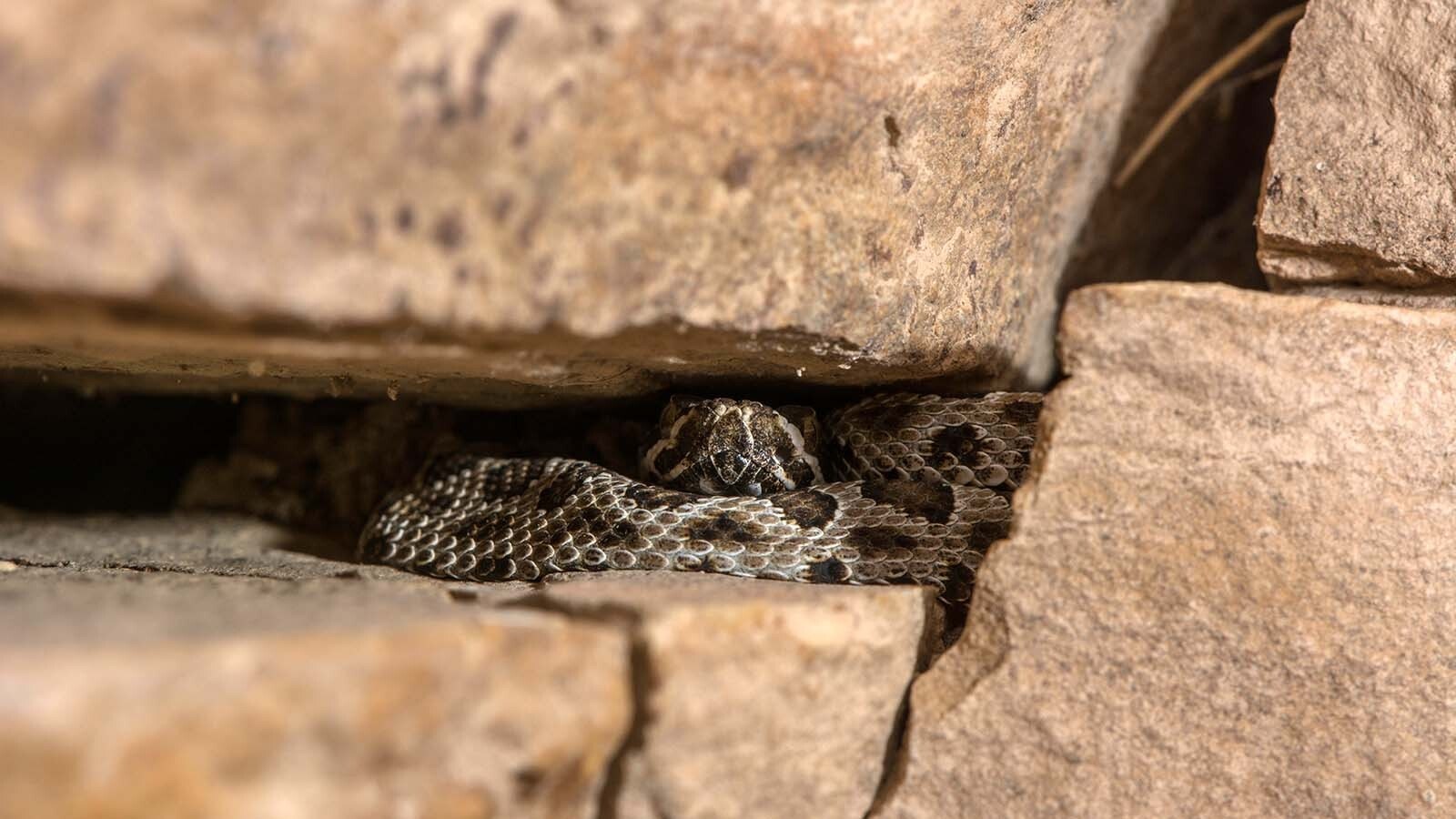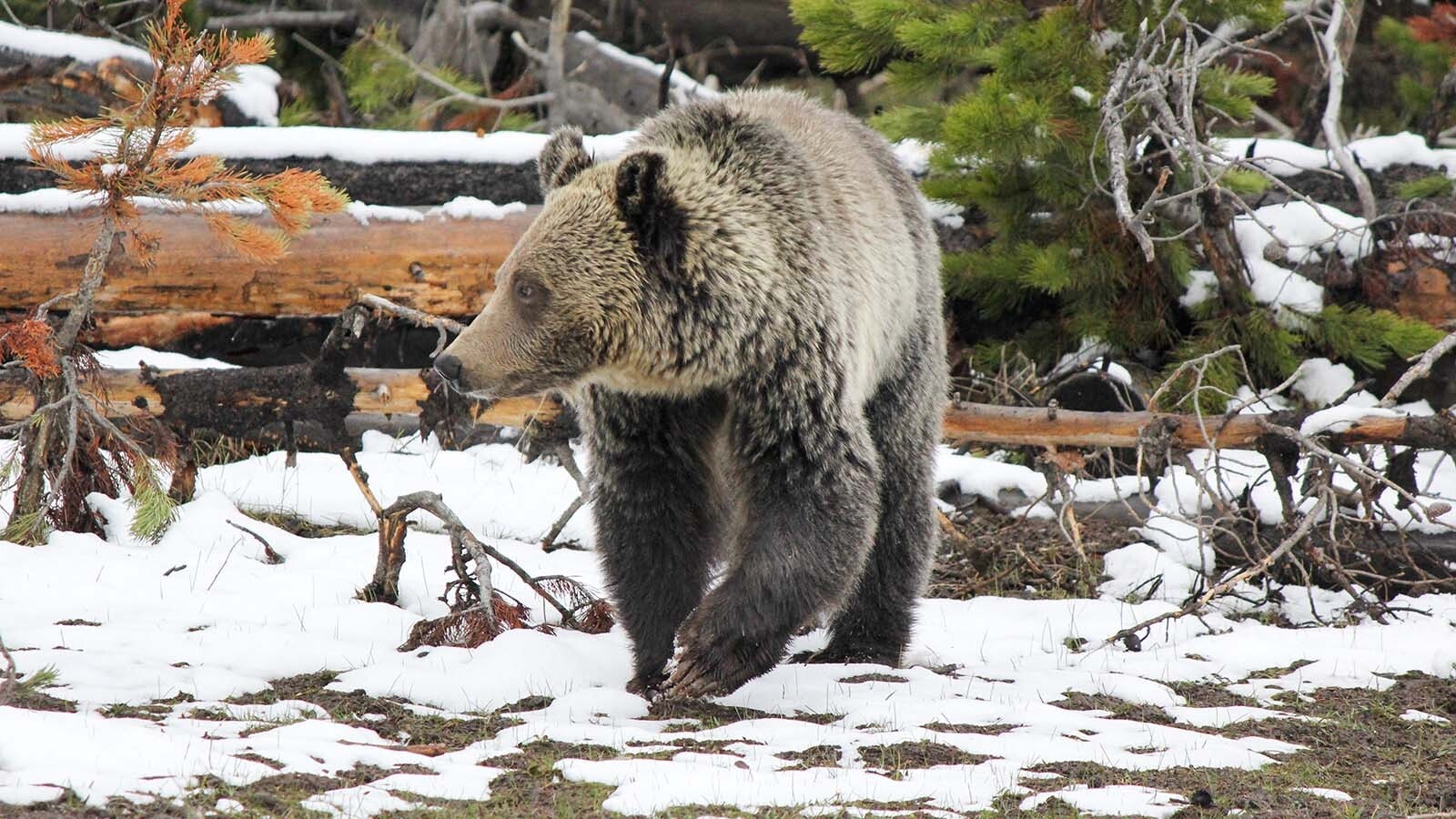It’s rattlesnake season in Green River, and they’re slithering closer to town. But don’t try dealing with them yourself — these snakes have legal protection.
Green River residents, including members of the city council, have reported seeing rattlesnakes curled up on public trails or basking in the sun near homes and businesses. That’s expected at this time of year, as the slithering snakes are also looking to beat the heat.
“Rattlesnakes are common in Green River at this time of year,” said Regina Dickson, information and education specialist for the Wyoming Game and Fish Department in Green River. “When it gets hot, they’re going to be moving around.”
A Wyoming rancher might recommend taking rattlesnakes head-on, either with a machete or a firearm. Dickson doesn’t recommend that strategy for any snake, but it’s especially inadvisable for the rattlesnakes infiltrating Green River.
“They are protected in Wyoming, Colorado, and Utah,” she said. “Killing them is not an option.”

Smaller But Deadlier
There are several snake species native to Wyoming, including two species of rattlesnake. Most Wyomingites encounter prairie rattlesnakes, which are widespread throughout the Western United States.
The rattlesnakes spotted near Green River are midget faded rattlesnakes, a smaller and rarer species only found in the Flaming Gorge region of Wyoming, Colorado, and Utah.
While a full-grown prairie rattlesnake can grow up to four feet long, the midget faded rattlesnake reaches a maximum length of 2.5 feet. They primarily feed on lizards, small mammals, and birds.
Green River and Rock Springs are at the northernmost extent of the midget faded rattlesnake’s habitat. Dickson said this particular species is known to travel extensive distances during the summer, when the snakes are the most active.
“They’re unique to a very small habitat that includes Sweetwater County, but they move around looking for water during the summer,” she said.
Dickson said midget faded rattlesnakes are the only species of rattlesnake in Green River. When a Green River resident sees a rattlesnake, it’s a midget faded rattlesnake.
All rattlesnakes are venomous, but the midget faded rattlesnake is especially dangerous. A 1977 study determined that its venom was one of the most potent, and anywhere from five to 30 times more lethal, than that of other rattlesnakes.
Dickson couldn’t confirm or deny that study but suggested the smaller snake is actually less dangerous than other venomous snakes. In fact, the midget faded rattlesnake tends to be less ornery than its close relatives.
“They’re usually less irritable and less likely to bite,” she said, “They’re more docile, but they’re definitely venomous.”
Who You Gonna Call?
Midget faded rattlesnakes are busy in July and August. In addition to the increasing heat and scarcity of water, it’s also their breeding season, so they’ll be slithering in and around Green River to answer nature’s calls.
Dickson said the best thing to do after encountering a midget faded rattlesnake is to leave it be. The worst thing anyone could do is try to move it.
“When you provoke, try to catch, or move a rattlesnake, it’s a bad idea,” she said. “If it’s minding its own business in a place where it’s not causing problems, and you can safely move away, just let it be.”
Killing midget faded rattlesnakes isn’t an option.
According to the University of Wyoming’s Wyoming Natural Diversity Database, the snake is a “Species of Concern” in Wyoming, which means it has “a combination of biological factors that predispose them to decline or potential extirpation from the state.”
The snake is also categorized as a “sensitive” species by the Wyoming Bureau of Land Management.
Nevertheless, rattlesnakes are destined to show up where people don’t want them. In that case, Green River residents can call the Wyoming Game and Fish Department or Green River Animal Control to safely relocate the rattlesnakes.
Dickson, a self-proclaimed “reptile enthusiast,” hopes educating people about these unique rattlesnakes will ensure their short and long-term survival in Green River. Many people get spooked by snakes, but they're a natural part of Wyoming’s varied ecosystems.
“Rattlesnake calls always pick up at this time of year,” she said. “The things that are going to make rattlesnakes move are habitat disturbance, and the search for food and water, so don’t be surprised to see more snakes at this time of year.”
Andrew Rossi can be reached at arossi@cowboystatedaily.com.





